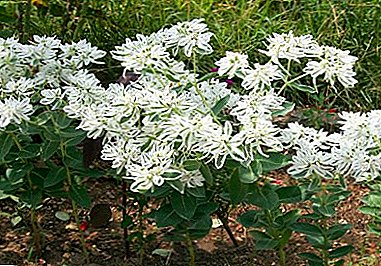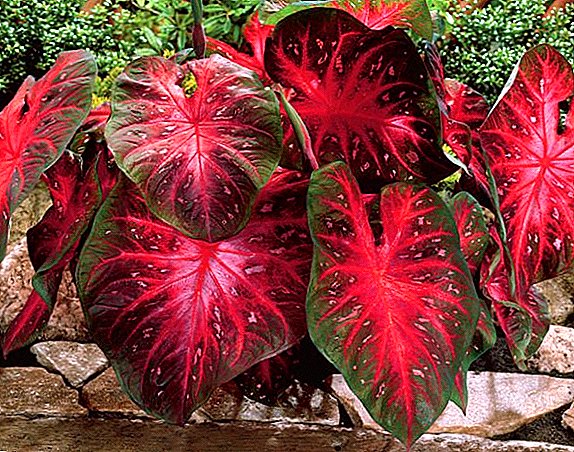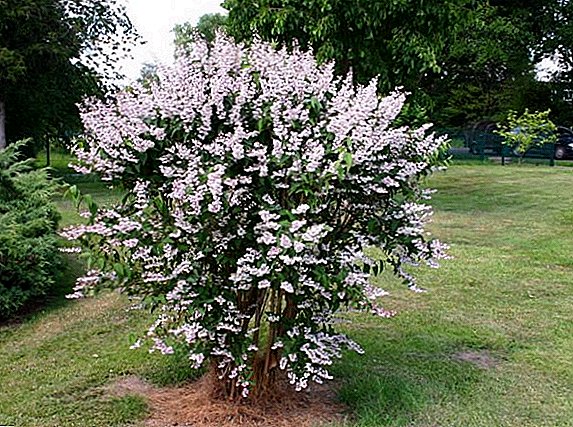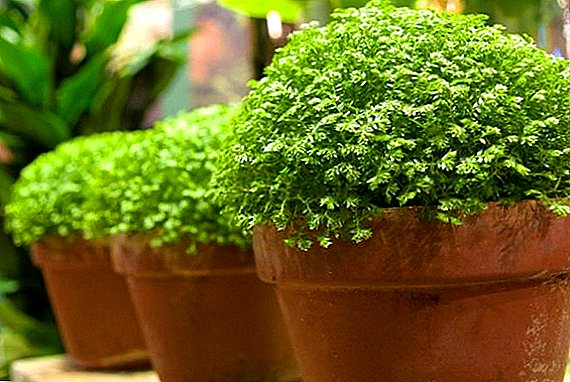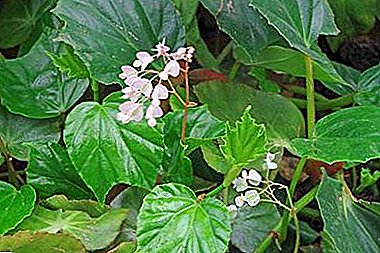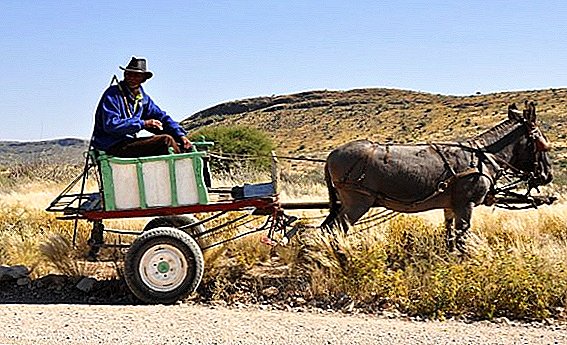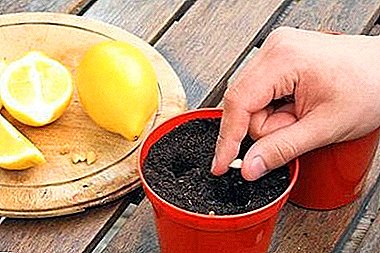
Who is not known lemon? He is well known to everyone, as if growing not in distant subtropics, but in the country house of every gardener.
It is easy to explain such popular love - it is so firmly established in our kitchen that it is simply impossible to find a replacement for it, and we have tea with lemon, and vodka for lemon, and so on, you can transfer for a long time.
And everyone already has their own favorite varieties, it is them that we prefer among many others, widely represented in our stores. Is it possible to grow a lemon from a stone at home?
Admirers of a wonderful plant have appeared, they selflessly grow lemon trees in their apartments, even varieties of fruiting room lemons are bred and successfully grown.
Preparatory activities
How to choose the right place?
Lemon is a subtropical plant and apartment climate is perfect for him, determine in advance a place that is well lit, but without direct sunlight, possible drafts undesirable.
Sill can be used while the plant is small, in winter you need to make sure that drafts and cold glass do not damage the lemon, unfavorable conditions will lead to the fall of the foliage.
There is no need to unceremoniously turn the plant towards the light, you need to slowly, several centimeters per reception, rotate the plants around its axis, the lighting will change slowly, little by little, the plant will develop evenly from all sides, the leaf fall will not happen due to a sudden change of lighting. In the same way do with already large bushes and trees.
Which pot to choose?
Ceramics. The ceramic pot is ideal for any plant; it is well breathable and airy; it is comfortable for a plant to dwell in it. The choice of ceramic containers for indoor plants is fantastic, you can choose for every taste and wealth.
Plastic. Plastic pots attract by their value, they are stronger than their counterparts from natural materials, but plastic does not let air and water through. This unpleasant property is compensated by constant loosening of the soil and a device of high-quality drainage.
Tree. Large lemon trees can be grown in wooden barrels, on the one hand - the original design solution, on the other - the environmental friendliness of the material is beyond doubt.
The soil
Citrus fruits, and lemon belongs to this group of plants, grow well and bear fruit on light, fertile soils, before the start of fruiting, when sowing or planting, fertile mixtures for indoor plants from the store are suitable.
If you need to prepare the soil yourself, take a little sand and humus and garden soil.
Importantso that the soil was light, did not contain an excess of clay, it poorly holds water.
About how to cook the perfect soil mixture for lemon at home, we described in detail here.
How to grow at home?
Here we will try to figure out how to grow a lemon tree from cuttings and seeds (seeds) at home, is it possible and what are the ways.
From bones
Variety selection
Homemade lemon is much easier to grow from seed than by cutting. When propagating with seeds, the plant grows faster, it hurts less, it is unpretentious, it adapts more easily to adverse conditions. In order to grow a full-fledged tree at home, it is important to choose a suitable variety. The following varieties are best suited for home cultivation:
- Pavlovsky. It has huge fruits weighing up to 500 grams, the taste is sweet, the growth of the tree is over 2 meters, the leaves of the tree exude a wonderful aroma.
- Meier. This is a hybrid weighing up to 150 grams, the taste is sweet and sour, gives a rich harvest.
- Anniversary. This is a variety that gives a bountiful harvest. It differs from other varieties in that the skin of the fruit is thick.
- Genoa The most unpretentious variety, which has a fragrant taste, gives a harvest relatively early - at 4 - 5 years of life.
- Ponderosis. Is a hybrid of grapefruit with lemon with a rather bitter taste, this variety differs from others in that it constantly blooms.
Choose the most suitable fruit, in your opinion, the way you would like to see your crop, or even better, just in case, a couple for safety net.
Seed preparation
The most important thing - you can not use long-extracted and timed to dry bones. You need to take fresh, certainly ripe lemons, carefully remove the bones from them, wash them with warm water and plant them, and for the seed to germinate quickly, you can gently remove the hard surface of the bones with a sharp knife. If the shell is not removed, then you need to lower the stones for a few hours in a solution of growth stimulant. We can not allow the drying of the bones, they must be planted wet.
Instruction
To sprout a lemon from the stone (seeds), it must be planted in a small container, to a depth of 3 centimeters, covered with foil and put in a warm place.
Sprouted young plants up to 15-20 centimeters can develop in tanks for sowing, but as they grow they need to be moved to individual pots. When the lemon reaches 30 centimeters in height, the top must be cut to 20 centimeters, this activates the growth of lateral shoots.
IMPORTANT! Watch for their uniform regrowth. It is necessary to form a lemon before shoots of 5 and 6 orders appear, pinching is best done in spring.
On the rules of forming the lemon crown and the secrets of pruning a tree at home, read here.
Plants from seeds differ enviable health, but, like all plants obtained from seeds, come into fruition later than those that were grafted with a varietal bud on a seedling.
Watch the video on how to plant a lemon bone:
From cuttings
Cutting a lemon at home is a way of reproduction, in which the qualities of the mother plant are copied, and you will know exactly what kind of fruit will appear on your plant.
On the handle there should be a few leaves and 2 or 3 buds on both sides, the length of the cutting is about 10 centimeters.
 Need cuttings put into a solution of heteroauxin or cornevita, these are root growth stimulants, and then within the period specified in the instructions for the preparation, put in a pot with soil.
Need cuttings put into a solution of heteroauxin or cornevita, these are root growth stimulants, and then within the period specified in the instructions for the preparation, put in a pot with soil.
Do not forget to arrange a drainage at the bottom of the pot, good for this are fragments of ceramic pots, broken, red brick.
Pour the shank, cover with glass jarand leave for rooting. The bank will eliminate excessive evaporation, films, bags are little stable, you may not notice the loss of moisture and drying out of the soil.
Rooting is determined by the appearance of growth. Cutting is also a great way to grow lemon at home.
Care
Gardeners note that lemon is a capricious plant. Plant development is highly dependent on the composition of the soil. Approximately recommended following composition: 1 part of sand, 1 part of manure, 3 parts of leafy land and 2 parts of loam. The pot is desirable to choose from the baked clay.
More information about the care of indoor lemon can be found in our material.
Watering
Too good is not good either, it can be said about excessive moisture, a plant regularly overflowing will die due to rotting of the root system. Watering a lemon is necessary as the soil dries.it is important not to forget about timely loosening, which is not in vain called dry irrigation - the evaporation of moisture after loosening is significantly reduced.
Subtropical plants love spraying, the humidity of the air during the heating season is easy to regulate with the help of a container with water. Steaming, it maintains the microclimate of the room.
NOTE! Watering and feeding in the winter should not be excessive, the plant is resting.
More tips on caring for homemade lemon in winter can be found in a separate article, and here we talked about the features of tree care in the fall.
Lighting
A pot with a plant should be placed so that the sun's rays fall on it less than 3 hours a day.
Top dressing
The ideal option for feeding lemon is the alternation of organic and mineral types of fertilizers. In winter, it is necessary to reduce the amount of fertilizer, low temperatures have a negative effect on absorption.
Important: Do not water the dry soil with top dressing; the lemon will burn the root system.
About how and how to feed the indoor lemon at home, read here.
Growing up
 As you grow every spring you need to replant the lemon In a pot centimeters 5 more than before, you do not need to plant in a pot for growth.
As you grow every spring you need to replant the lemon In a pot centimeters 5 more than before, you do not need to plant in a pot for growth.
There is also no need to transplant a grown lemon either, each spring the top layer of soil in the tank where your tree lives is replaced by humus or fertile garden soil with the addition of humus, and this is enough for him.
Also developed and widely used. complex fertilizer Zdraven for citrus fruits, it contains the whole complex of macro and microelements necessary for the growth and fruiting of plants.
Grown lemon can be placed in the garden for the summer, the place should be protected from winds and other possible adversities, a sudden change in lighting can be bad, be careful.
Now you know how to grow a lemon at home, and most importantly how to do it right. Now let's look at the major diseases and pests of lemon to protect our crop.
Useful video on how to transplant seedlings into separate pots:
Pests and diseases
Your aphid, scythe, bug, or spider mite may be interested in your lemon;
The sores that appear on the bark need to be cleaned and treated with copper sulfate, mold, wherever they settle, you just need to remove with a damp cloth.
It happens that the leaves of the indoor lemon fall, curl or change color. The reasons for this phenomenon, as well as ways to combat it, we told in a separate article.
Will there be fruit?
If you dilute a room lemon with seeds, it will begin to bear fruit for 7–9 years, if cuttings - for 3–4 years, by cutting it - after 1-2 years.
To speed up fruiting, the following methods exist:
- Splitting. Make a cut on the seedling and attach the stalk from the fruit tree, wrap with tape, cover with plastic wrap on top, as it will graft - remove the film.
- Budding.Obrezayem sapling up to 10 cm and plant a fruit-bearing stalk to it. Both methods significantly accelerate fruiting. The plant may not bloom if the cutting has been selected from a tree that has not previously borne fruit.
Lemon fruits have both beneficial and healing, and harmful properties. You can read about them in our article.
At non-observance of temperature condition, insufficient lighting, an irregular cutting and defeat by diseases, the plant will not bear fruit.
You can make a lemon blossom using cross-pollination during the flowering period within one variety.
Conclusion
Paying great attention to the question of how to grow a lemon tree at home from a seed, we forget that this beautiful plant with glossy, dark green leaves fills the room in which it grows with a light lemon scent. Lemon essential oils are phytoncide, they purify the air from bacteria, and aromatherapists consider it a source of cheerfulness and good mood.
Therefore, the cultivation of lemon in the pot can be not only for the sake of the fruit, but also as a beautiful decoration of your interior, the main thing is to follow the rules of lemon care.


